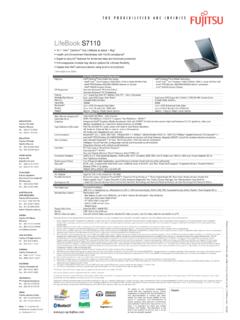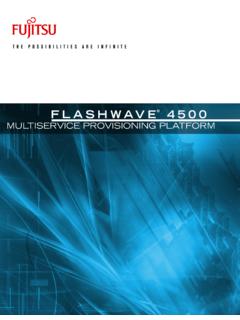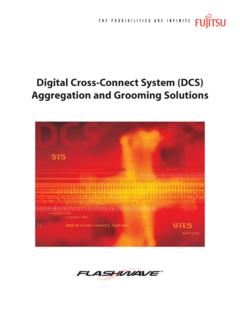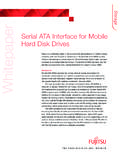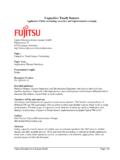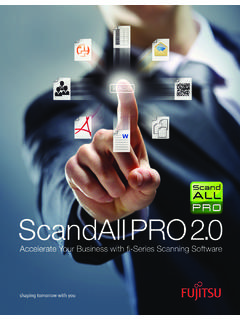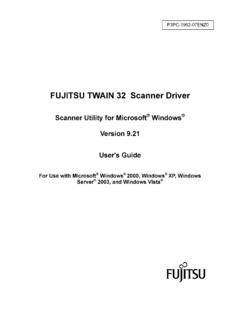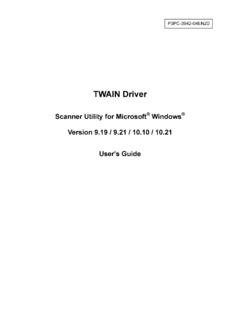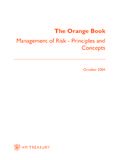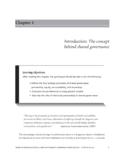Transcription of Managing Hybrid IT - Fujitsu
1 THE WHITE book Managing Hybrid IT. The definitive guide to maximising the cloud, enabling innovation and redefining governance THE WHITE. book Managing Hybrid IT. Contents Acknowledgements 4. Preface 5. Executive summary 6. Introduction: A pivotal platform 10. 1: Rethinking innovation and modernisation opportunities 12. 2: Growing pains: Managing multiple clouds alongside existing IT 16. 3: Navigating your cloud journey 26. 4: Re-engineering for cloud 32. Fujitsu and Managing Hybrid IT 36. Managing Hybrid IT speak: Key terms explained 38.
2 3. Acknowledgements We would like to thank the following individuals for their valuable contributions to our research in developing this publication (listed alphabetically, by organisation): ll Mike Capone, Chief Information Officer and Corporate Vice President of Product Development, ADP. ll Vishy Padmanabhan, Global IT Practice Partner, Bain & Company ll Jim Reavis, Co-founder and CEO, Cloud Security Alliance ll Christopher Dailey, Head of Research, Datu Health ll Don Crabtree, Principal Infrastructure Architect, Delta Air Lines ll Andrew Brabban, Director for Applications Portfolio, Fujitsu ll Cameron McNaught, Executive Vice President, Emerging Technologies and Solutions, Global Delivery, Fujitsu ll Dr David DeHaven, Dean of the School of Information Technology.
3 Kaplan University ll Bill Limond, Chief Information Officer (interim), Medicines and Healthcare products Regulatory Agency ll Patricia Renzi, Principal, Milliman ll Scott Skellenger, Vice President and Chief Information Officer, RainTree Oncology Services ll Gareth Wylie, Head of Programmes, Telef nica Digital ll David Harkness, Vice President and Chief Information Officer, Xcel Energy ll Jim Stikeleather, Co-author, Business Innovation in the Cloud: Executing on Innovation With Cloud Computing 4.
4 Preface The White book of Managing Hybrid IT is the latest in a series of research reports from Fujitsu that seek to document cloud utilisation within organisations, offering guidance on the application and management of a technology where adoption is surging. It adds to our existing white books on cloud adoption, cloud security, big data, and mobilising the enterprise. It is clear from both our research and the extensive discussions that my peers and I have held with CIOs, partners and industry analysts that cloud is now part of the standard delivery model for IT services in many organizations today.
5 From Fujitsu 's perspective, we see cloud as the natural platform for delivering innovation and new types of applications, such as Big data, IoT, Mobility, as well as modernizing existing ICT systems. Cloud has a key role in underpinning our vision of a human-centric intelligent society, one where social and business innovation is driven by the intelligent use of information and communication technology. This fifth instalment of our white book series, produced in collaboration with Longitude Research, reviews several key questions associated with this acceleration in the adoption of cloud and the subsequent challenges that IT leaders are grappling with.
6 In particular, it seeks to: l Identify the issues that organisations are encountering as they look to manage multiple cloud solutions and integrate these into existing IT systems a Hybrid IT set-up;. l Explore the strategies companies are using to manage the performance, security and cost of this new world of Hybrid IT effectively, while still giving business-unit leaders the freedom to use cloud technology as a platform for innovation;. Assess how the relationship of IT with the wider business may need to change in the long term, as organisations adapt to the Hybrid IT ecosystems they must build for the future.
7 Define a new approach and solution for the integration, aggregation and management of this growing portfolio of cloud services that is effective for a new model of service procurement and deployment. The organisations that most readily accept the new reality of Hybrid IT, and reconfigure themselves to manage a radically different IT landscape, will find they are better positioned for the future. In particular, they will find themselves more able to innovate, less vulnerable to security risks and system-performance issues, and more responsive to the demands of their respective markets.
8 In short, they stand to gain substantial competitive advantage by embracing the Hybrid IT model as the way forward. As cloud usage matures it is becoming clear that adopting cloud no longer delivers the level of competitive advantage it once did. In fact, not adopting cloud is, in many instances, becoming a competitive disadvantage. The advantage now is from unlocking the value in existing data and systems and marrying these to new ways of engaging customers and changing the way organizations operate etc.
9 By providing a clear guide to the Hybrid IT world that CIOs and other IT leaders are facing today, we hope this book will be useful in helping to ensure success in your journey towards a deeper adoption of the cloud in your organisation. As ever, we welcome your feedback and insights. Andrew Brabban Vice President, Hybrid IT Services, Global Delivery, Fujitsu 5. Executive summary ll Cloud-computing systems are business as usual for most organisations, with deepening adoption now focused on improving processes, increasing efficiency, and enabling innovation.
10 A significant number of organisations have moved beyond an experimentation stage with cloud, with widespread adoption that draws on multiple systems and providers. Across a range of sectors, this deeper uptake is enabling fundamental business transformations, including wholly new processes, shorter supply chains, and faster routes to market for new products. ll Cloud has changed the way corporate technology projects are procured, deployed, and managed. The reality today in many organisations is that business-unit leaders are directly driving many corporate IT projects, given the ease with which cloud systems can be bought.
